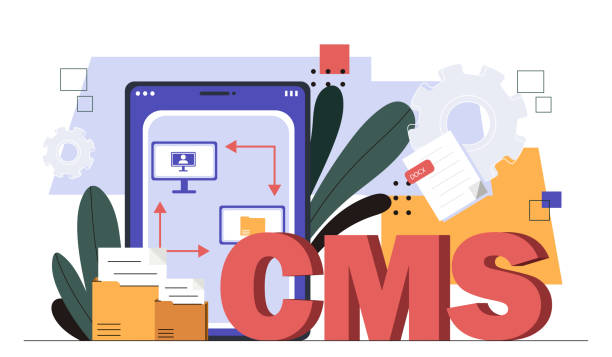Taking Your First Steps Online: A Step-by-Step Guide to Web Development Basics

The digital world is built on code, and every website, app, and service you interact with started as an idea translated into a language computers can understand. For many, the world of web development—with its endless acronyms, confusing frameworks, and steep learning curves—seems impenetrable.
However, the foundation of web development is surprisingly accessible. It is a craft that requires logic, creativity, and, most importantly, the willingness to start.
This comprehensive guide is designed to break down the barrier to entry, transforming the intimidating prospect of “learning to code” into a practical, step-by-step journey. We will explore the tools, languages, and processes necessary to take your ideas from concept to a fully functional website.
“The only way to do great work is to love what you do. If you haven’t found it yet, keep looking. Don’t settle.” – Steve Jobs
If you are ready to take control of your digital presence and begin the rewarding journey of web development, let’s start laying the groundwork.
The Landscape: Understanding the Digital Architecture
Before writing a single line of code, you must understand the two fundamental components that make up any website: the Frontend and the Backend.
1. The Frontend (Client-Side)
The frontend is everything the user sees and interacts with directly in their browser. It is the visual presentation, the layout, the buttons, and the animations. If the internet were a car, the frontend would be the dashboard, the seats, and the paint job.
Key Responsibilities of the Frontend:
- Displaying content clearly.
- Handling user input (forms, clicks).
- Ensuring responsiveness across different devices (mobile, tablet, desktop).
2. The Backend (Server-Side)
The backend is the engine room—the non-visible infrastructure responsible for storing data, processing requests, and executing complex logic. It manages the server, the application, and the database.
When you log into a website, the frontend sends your credentials to the backend, which verifies them against the database and sends back a response.
Key Responsibilities of the Backend:
- Database management (storing and retrieving data).
- Authentication and authorization (user logins).
- Application logic and calculations.
Your Starting Focus: As a beginner, your immediate focus should be mastering the Frontend—the foundational languages that create static, accessible web pages.
Step 1: Mastering the Holy Trinity of Web Development
All modern websites, regardless of complexity, rely on three core languages working in concert. These are the mandatory building blocks you must learn first.
A. HTML: The Structure (HyperText Markup Language)
HTML is the skeleton of the webpage. It defines the content and the structural hierarchy. It tells the browser whether something is a main heading, a paragraph, an image, or a link. HTML is not a programming language; it is a markup language that uses tags to structure content.
Essential HTML Structure
Every HTML document starts with a few boilerplate tags:
<!DOCTYPE html>
<html lang="en">
<head>
<meta charset="UTF-8">
<title>My First Web Page</title>
</head>
<body>
<!-- Content goes here -->
<h1>Welcome to My Site</h1>
<p>This is a paragraph of introductory text.</p>
<a href="https://example.com">Visit Example</a>
</body>
</html>
| Element | Description | Code Example |
|---|---|---|
<!DOCTYPE html> |
Defines the document type and HTML version. | |
<html> |
The root element, encapsulating the entire page. | |
<head> |
Contains metadata about the document (links to CSS, character set). | |
<body> |
Contains all the visible content of the page. | |
<h1> to <h6> |
Defines headings, from most important (H1) to least (H6). | <h2>Subheading</h2> |
<p> |
Defines a paragraph. | |
<a> |
Defines a hyperlink (anchor tag). |
B. CSS: The Style (Cascading Style Sheets)
If HTML provides the content structure, CSS provides the visual finesse. CSS is responsible for colors, fonts, layout, spacing, and responsive design. Without CSS, a website is merely a plain black-and-white document.
CSS works by selecting an HTML element and applying specific rules (declarations) to it.
Essential CSS Syntax
CSS is usually written in a separate file (e.g., style.css) and linked in the <head> of the HTML document.
/* This is a CSS comment */
h1 {
/* Property: Value; */
color: #333333; /* Dark gray text */
font-size: 48px;
text-align: center;
}
p {
line-height: 1.6;
margin-bottom: 20px;
}
/* Example of a class selector */
.primary-button {
background-color: blue;
color: white;
padding: 10px 20px;
}
Key Concepts in CSS:
- Selectors: How you target the elements (e.g., by tag name like
h1, by Class like.button, or by ID like#header). - The Box Model: Understanding that every HTML element is treated as a rectangular box with content, padding (space inside the box), border, and margin (space outside the box). This concept is crucial for layout.
- Flexbox and Grid: Modern CSS systems used to create complex, flexible layouts that adapt elegantly to different screen sizes—essential for modern responsive design.
C. JavaScript (JS): The Interactivity (The Brain)
Once you have structure (HTML) and style (CSS), you need behavior. JavaScript is the programming language that allows you to manipulate the page, respond to user actions, and fetch data without reloading the entire page.
JS is what makes forms validate, photo galleries slide, and content dynamically update.
Essential JavaScript Concepts
While JavaScript is massive, beginners should focus on variables, functions, and manipulating the Document Object Model (DOM).
// 1. Defining a variable
let greeting = "Hello, Web Developer!";
// 2. A simple function to perform an action
function displayMessage() {
console.log(greeting);
// This logs the message to the browser's console (a debugging tool)
}
// 3. Manipulating the DOM (e.g., changing the text of an H1 tag)
document.getElementById("main-heading").textContent = "The Content Has Changed!";
// 4. Adding an event listener (responding to a click)
document.getElementById("myButton").addEventListener('click', function() {
alert("Button was clicked!");
});
The Power of Foundation: “Knowledge is of no value unless you put it into practice.” – Anton Chekhov Many beginners rush to frameworks like React or Vue.js. However, professional developers emphasize that a deep understanding of pure HTML, CSS, and vanilla JavaScript is the most valuable foundation. Frameworks fade; the core languages persist.
Step 2: Setting Up Your Development Environment
You don’t need expensive software to start coding. Your development environment is simply the collection of tools you use to write, view, and organize your code.
A. The Code Editor
This is your primary tool. It’s like a specialized word processor for code, offering features like syntax highlighting (coloring code keywords), autocompletion, and integrated terminal access.
Recommendation: VS Code (Visual Studio Code) VS Code, developed by Microsoft, is the industry standard for a reason. It is free, highly customizable, and supports extensions for nearly every programming language imaginable.
B. The Browser and Developer Tools
You need a modern browser (Chrome, Firefox, Edge) to view your work. Crucially, these browsers come equipped with Developer Tools (usually accessed by pressing F12 or right-clicking and selecting “Inspect”).
Why DevTools are Essential:
- Elements Tab: Lets you view and temporarily edit the HTML structure and CSS applied to any element on the page in real-time.
- Console Tab: Displays JavaScript errors, warnings, and output (
console.log). - Sources Tab: Allows you to debug JavaScript line by line.
C. The Terminal (Command Line Interface, CLI)
While not strictly necessary for simple static sites, becoming familiar with the terminal (e.g., Command Prompt on Windows, Terminal on Mac/Linux) is vital for professional workflow—especially for version control (Step 5) and running build tools.
Step 3: Your First Project – Building a Static Site
The best way to learn is by doing. Your first project should be achievable and use only the core Holy Trinity.
The Project Goal: Create a simple, responsive one-page resume or personal portfolio (the “About Me” page).
1. Structure the Files
Create a dedicated folder for your project and three core files:
/my-first-site
|-- index.html // The main content structure
|-- style.css // The visual rules
|-- script.js // The basic interactivity (optional for first step)
2. Link the Assets (The Crucial Connection)
When you write HTML, you must tell it where the style sheet is located. Place this line inside your <head> tag in index.html:
<link rel="stylesheet" href="style.css">
Similarly, link your JavaScript file right before the closing </body> tag. This ensures the HTML content loads before the script tries to interact with it.
<script src="script.js"></script>
3. Implement Layout with CSS
For your simple site, practice creating a header, a content container, and a footer, ensuring the content is centered and readable. This is the moment to start working with CSS Box Model properties like padding, margin, and border.
CSS Example (Centering Content):
body {
font-family: sans-serif;
background-color: #f4f4f9;
}
.container {
max-width: 960px; /* Limits the width of content for readability */
margin: 0 auto; /* Sets top/bottom margin to 0, and left/right to auto (center) */
padding: 20px;
background-color: white;
box-shadow: 0 4px 6px rgba(0, 0, 0, 0.1);
}
Step 4: Version Control – The Safety Net (Git and GitHub)
As soon as your code leaves the “Hello World” stage, you must integrate version control. Version control systems (VCS) track changes to your code base over time, allowing you to revert to previous states, collaborate cleanly with others, and manage parallel development paths.
The industry standard for VCS is Git.
A. What is Git?
Git is a distributed version control system installed locally on your computer. It tracks every modification you make to your files.
B. What is GitHub (or GitLab/Bitbucket)?
GitHub is a hosting service for Git repositories. It is the social network for developers, allowing you to share your code publicly or privately, review code changes, and manage large projects in teams.
C. Key Git Commands for Beginners
- Initialize the Repository: This turns your project folder into a Git-tracking repository.
git init - Staging Changes: Tells Git which specific files you want to save in the next snapshot.
git add index.html style.css # OR: git add . (to stage all modified files) - Committing the Changes: Creates a permanent snapshot (a “commit”) of the staged files. The message explains what was achieved in this batch of changes.
git commit -m "Added initial structure and basic CSS layout" - Pushing to Remote: Uploads your local commits to your remote repository (e.g., GitHub).
git push origin main
Benefits: Using Git forces professional discipline. If you break your website, you can simply revert to the last working commit. It is non-negotiable for serious development.
Step 5: Going Live – Deployment and Hosting
A website is only useful if others can see it. Deployment is the process of making your code accessible via the internet.
A. Domain Name and DNS
- Domain Name: The human-readable address (e.g.,
mygreatwebsite.com). This must be purchased from a registrar (like GoDaddy, Namecheap, or Google Domains). - DNS (Domain Name System): The internet’s phonebook. It translates the domain name into the specific IP address of the server where your files are hosted.
B. Hosting Options (Where the Files Live)
For your first static site, you have fantastic, free options.
1. Static Site Hosting (Recommended for Beginners)
Services like Netlify or Vercel specialize in hosting static sites (HTML, CSS, JS only) and are perfectly integrated with GitHub. You simply connect your GitHub repository, and every time you push a commit, the service automatically rebuilds and redeploys your site globally in seconds.
2. Traditional Web Hosting (Shared Hosting)
This is the classic method, suitable for when you eventually move to a dynamic, backend-powered site (e.g., WordPress or a custom application using Python/PHP). These services (like Bluehost or HostGator) require you to manually upload files via FTP (File Transfer Protocol).
The Deployment Workflow (Using Netlify/Vercel):
- Push your final code to GitHub.
- Connect your GitHub repository to your chosen hosting platform.
- The platform recognizes the source code and deploys it globally.
- Your site is live, accessible via a generated URL (e.g.,
my-site-123.netlify.app).
Step 6: Beyond the Basics – Expanding Your Skillset
Once you have mastered the core languages and deployed your first website, the world of web development truly opens up.
A. Frameworks and Libraries (Efficiency and Scale)
Frameworks are pre-written packages of code that provide structure, efficiency, and best practices, saving you from writing repetitive boilerplate code.
1. Frontend Frameworks (For Complex User Interfaces)
These handle sophisticated UI components, state management, and single-page application (SPA) architectures, where the entire application loads once and content updates dynamically.
- React (Meta/Facebook): Currently the most popular library, focused on building reusable UI components.
- Vue.js: Known for its simplicity and gentle learning curve.
- Angular (Google): A comprehensive framework often used for large, enterprise-level applications.
2. Backend Frameworks (For Server Logic and APIs)
When you are ready to manage user data, logins, and databases, you must choose a backend language and framework:
- Node.js (JavaScript): Allows you to use JavaScript on the server side (often paired with the Express.js framework). This is popular because it allows full-stack developers to use one language (JS).
- Python: Highly readable and favored for data science and AI (often paired with Django or Flask).
- PHP: Powers the vast majority of existing websites, including WordPress (often paired with Laravel or Symfony).
B. Databases and Data Management (Persistence)
Dynamic sites need a place to store persistent information (user profiles, blog posts, product inventories).
- SQL (Relational Databases): Structured Query Language, used by databases like PostgreSQL and MySQL. Data is organized in strict tables (rows and columns).
- NoSQL (Non-Relational Databases): Databases like MongoDB, which store data in flexible, document-like formats (often JSON-like objects).
C. Continuous Learning
Technology evolves rapidly. Professional success in web development hinges on continuous learning. Follow industry news, participate in developer communities, and commit to constantly updating your skills.
Conclusion: The Journey Has Begun
Taking the first steps in web development can feel like learning an entirely new language, but by focusing on the fundamentals—HTML for structure, CSS for style, and JavaScript for behavior—you build a powerful and enduring foundation.
You are now equipped with the roadmap: the necessary tools (VS Code), the professional workflow (Git), and the goal (a deployed website).
The most challenging part of any monumental task is simply beginning. Do not worry about perfection; focus on iteration. Your first website will be simple, perhaps even ugly, but it will be functional, and most importantly, it will be yours.
“The best way to predict the future is to create it.” – Peter Drucker
Open your code editor, create that index.html file, and start building. The digital world is waiting for your contribution.





